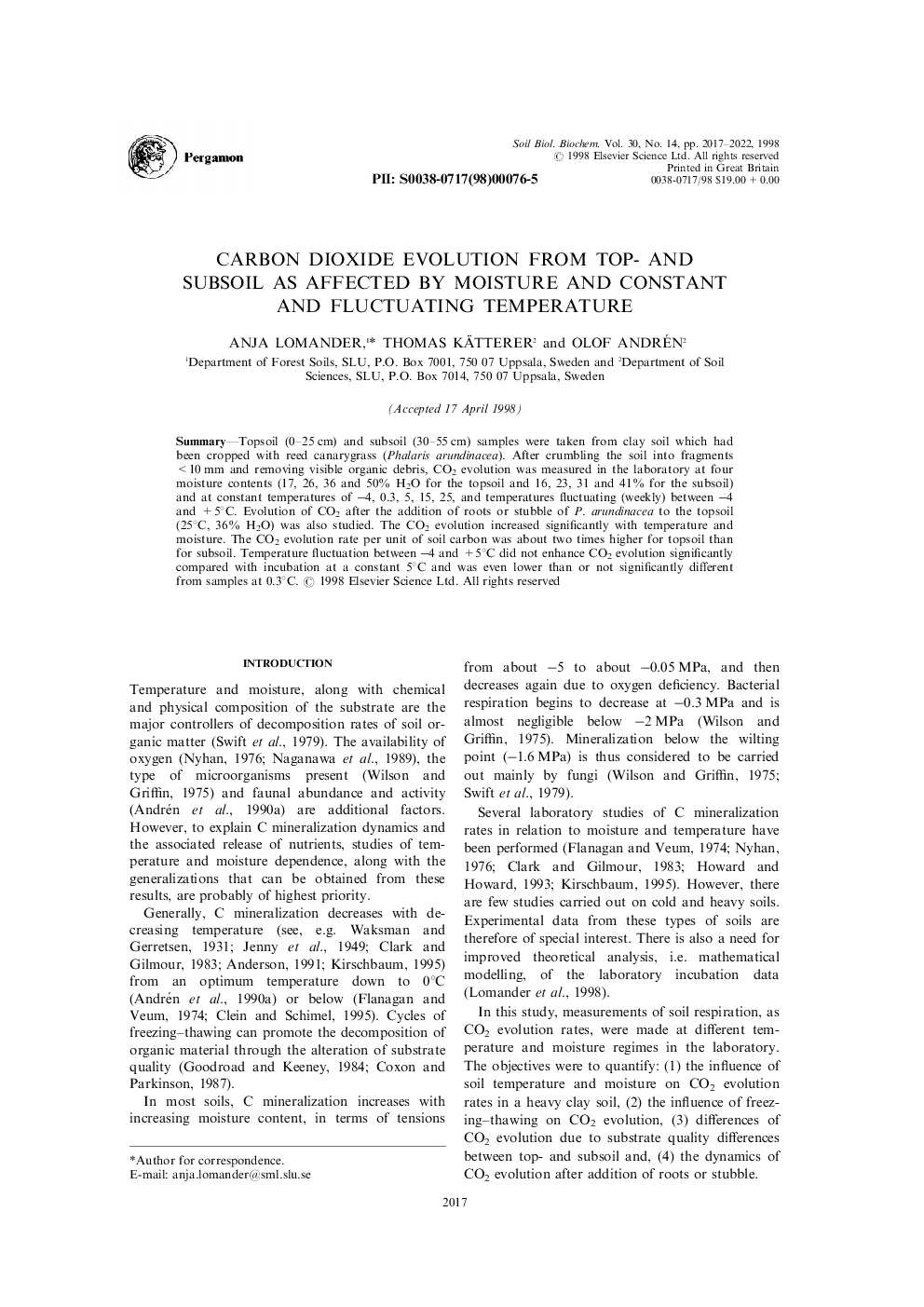| Article ID | Journal | Published Year | Pages | File Type |
|---|---|---|---|---|
| 2027454 | Soil Biology and Biochemistry | 2017 | 6 Pages |
Topsoil (0–25 cm) and subsoil (30–55 cm) samples were taken from clay soil which had been cropped with reed canarygrass (Phalaris arundinacea). After crumbling the soil into fragments <10 mm and removing visible organic debris, CO2 evolution was measured in the laboratory at four moisture contents (17, 26, 36 and 50% H2O for the topsoil and 16, 23, 31 and 41% for the subsoil) and at constant temperatures of −4, 0.3, 5, 15, 25, and temperatures fluctuating (weekly) between −4 and +5°C. Evolution of CO2 after the addition of roots or stubble of P. arundinacea to the topsoil (25°C, 36% H2O) was also studied. The CO2 evolution increased significantly with temperature and moisture. The CO2 evolution rate per unit of soil carbon was about two times higher for topsoil than for subsoil. Temperature fluctuation between −4 and +5°C did not enhance CO2 evolution significantly compared with incubation at a constant 5°C and was even lower than or not significantly different from samples at 0.3°C.
